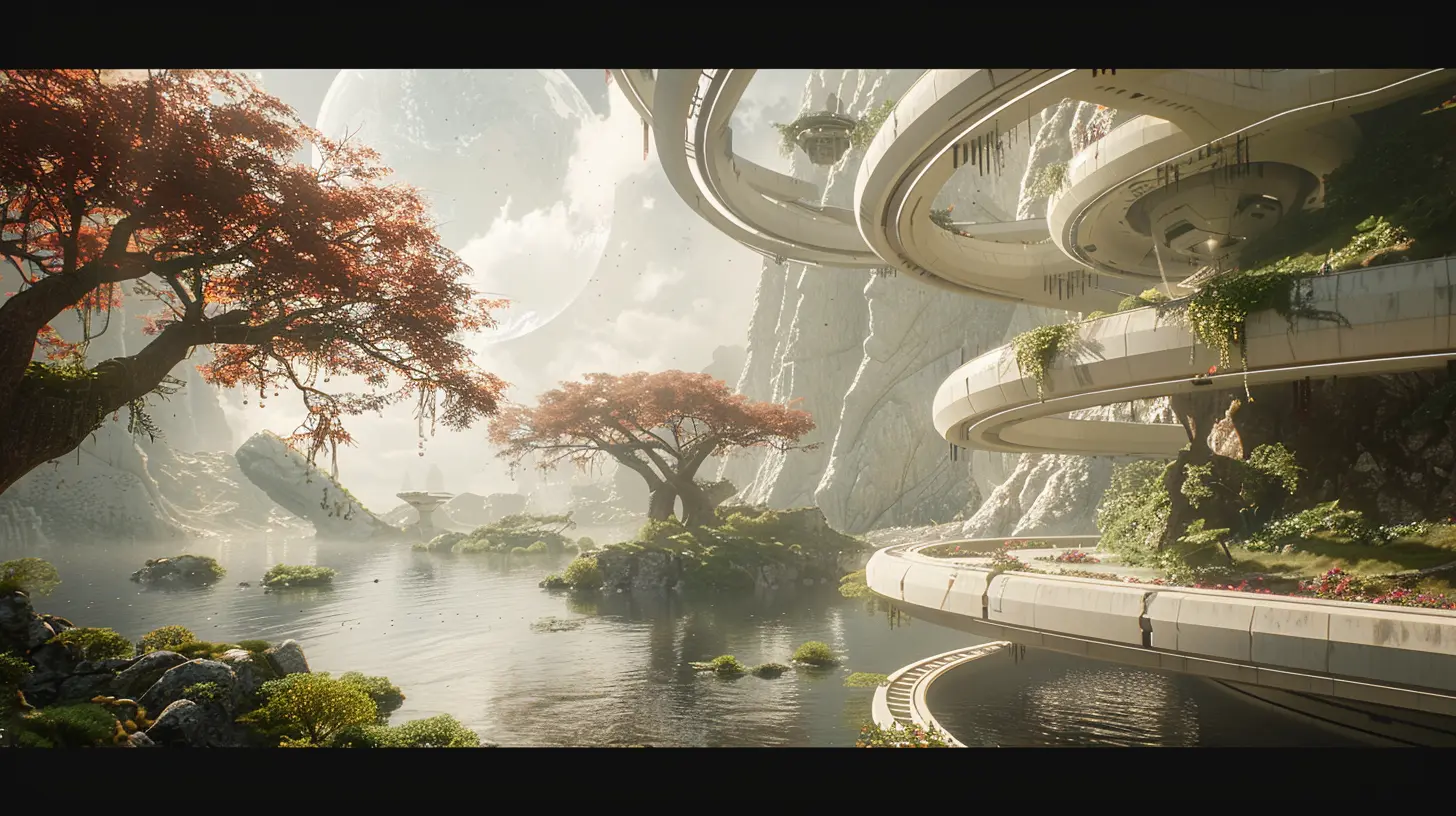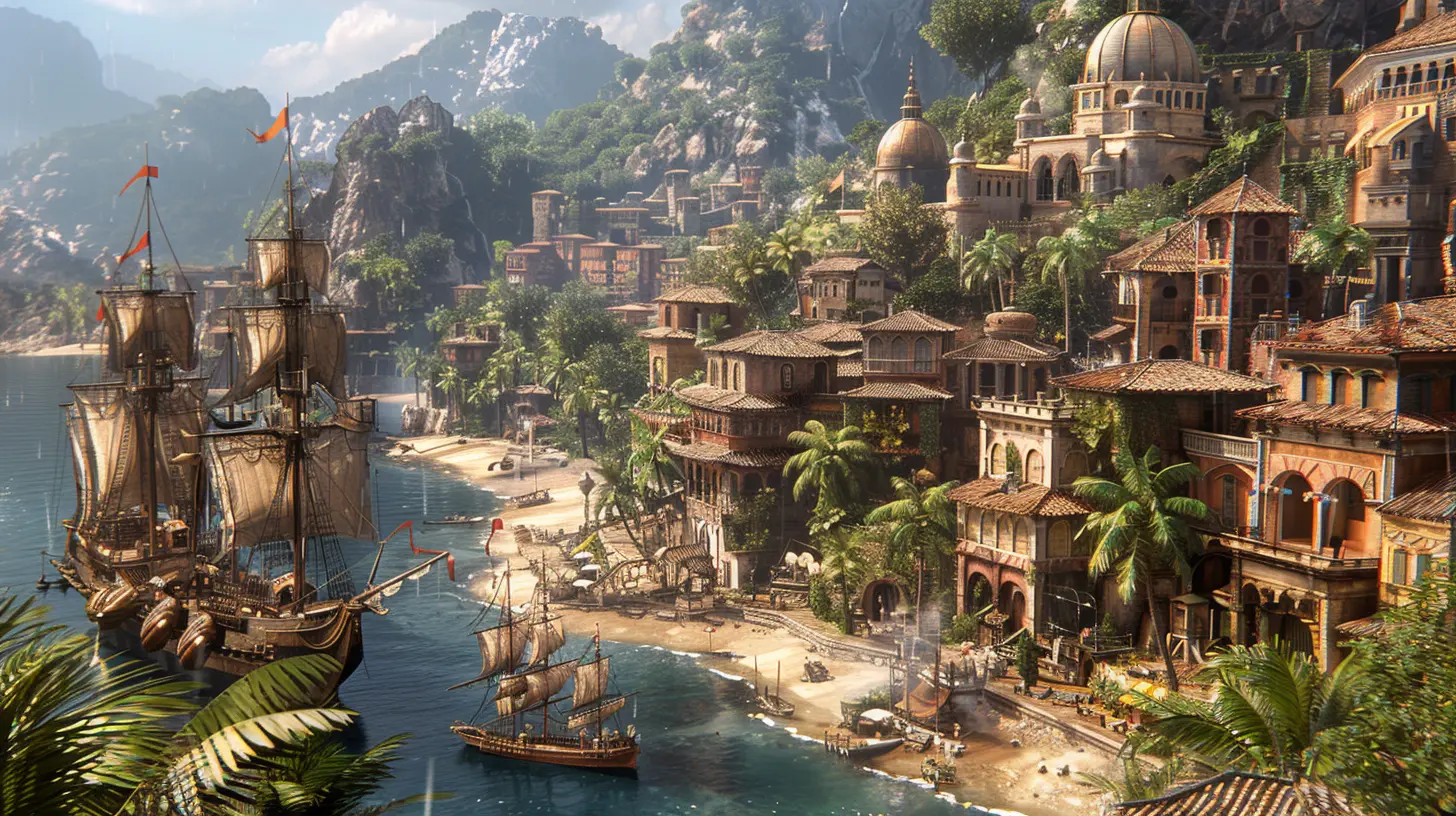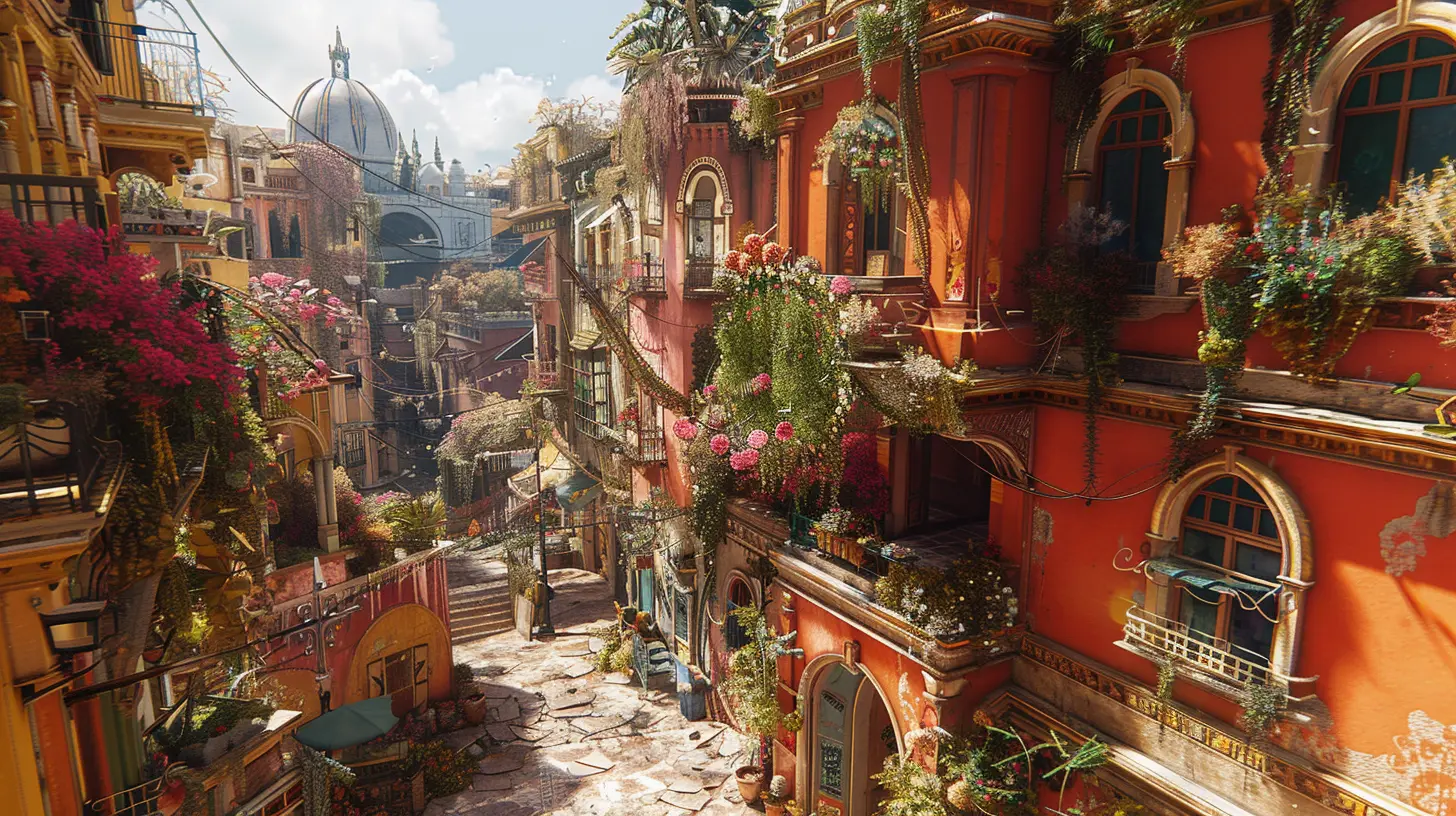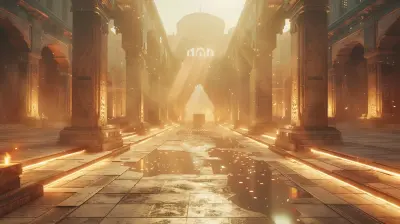How Ray Tracing Is Revolutionizing Game Visuals
28 May 2025
Have you ever stepped into a virtual world that felt so vividly real, you almost forgot you were playing a game? That’s the magic of ray tracing. It's a game-changer—literally. Over the past few years, ray tracing has been a hot topic in the gaming industry. It’s like giving video games a fresh coat of paint, but this isn’t your typical paint job—it’s next-level realism that’ll blow your mind.
Let’s dive into how ray tracing works, why it's such a big deal, and how it’s transforming the way we experience games. If you’re a gamer, this is something you need to know!
What Exactly Is Ray Tracing?
You’ve probably heard the term thrown around by graphic card manufacturers or in game trailers, but what is ray tracing really? In simple terms, ray tracing is a rendering technique that simulates how light behaves in real life. If you've ever noticed sunlight bouncing off a car, or shadows softly fading into the distance, that's the kind of detail ray tracing can replicate.Think of it like tracing the path of light rays, hence the name. Instead of faking lighting effects (as games used to), ray tracing calculates the actual physics of light. It tracks the path of light beams and figures out how they interact with objects in their environment. The result? Games look stunningly realistic, with natural-looking reflections, shadows, and lighting.
Traditional Graphics vs. Ray Tracing
Let’s compare old-school graphics rendering to ray tracing, shall we? Traditionally, games used techniques like rasterization to create visuals. Rasterization is efficient because it simplifies how objects are rendered. But here’s the thing—it’s all about shortcuts. Developers used tricks to mimic realistic lighting, like baked lighting, where light effects are pre-rendered and applied to textures.While rasterization served us well for decades, it has limitations. Reflections often look flat or unrealistic, shadows can appear blocky, and lighting doesn’t adapt dynamically to changes in the environment. Ever noticed games where puddles look more like mirrors instead of realistic water? That’s a side effect of those shortcuts.
Ray tracing, however, throws those limitations out the window. It doesn’t rely on tricks or pre-rendered visuals. Instead, it gives you real-time reflections, accurate shadows, and lighting effects that make everything look more immersive. Picture this: you’re walking through a highly-detailed fantasy forest in a game, and the sunlight peeks through the leaves, scattering rays across the ground. That’s what ray tracing can do.
How Does Ray Tracing Work in Gaming?
Okay, here’s where it gets a little technical (but stick with me, it’s worth it!). Ray tracing works by simulating how light rays travel and interact with different surfaces. This means every object in the game can cast a shadow, reflect light, or refract through transparent materials like water and glass. It’s all about creating a visually accurate scene.In gaming, real-time ray tracing is where the magic happens. Real-time means the game engine calculates how light should behave dynamically, frame by frame, while you’re playing. This is where hardware-heavy components like NVIDIA’s RTX GPUs or AMD’s RX 6000 series come into play. These GPUs are specifically designed to handle the insane processing power required for ray tracing.
Here’s the catch, though: ray tracing is demanding. Rendering realistic lighting and reflections takes a toll on hardware, which is why early attempts often came with performance issues. But as technology advances, we’re seeing smoother implementations that balance performance and visual quality.
Why Ray Tracing Is Revolutionizing Game Visuals
So, why all the hype? The answer lies in how much it enhances the gaming experience. Ray tracing brings a level of immersion previously thought impossible. Let’s break down its impact:1. Realistic Lighting
Lighting can make or break a scene. With ray tracing, light behaves like it does in the real world. It bounces off shiny surfaces, scatters through smoke or fog, and shifts dynamically based on environmental changes. Have you ever noticed how a dimly lit room in a horror game makes you feel on edge? Ray tracing amplifies that effect tenfold.2. Dynamic Reflections
Remember how reflections in older games looked like they were painted on? Ray tracing fixes that. Now, when you walk past a puddle or peer into a window, you’ll see realistic reflections that change based on your perspective. It’s like walking past a storefront in real life and catching a glimpse of yourself.3. Accurate Shadows
Shadows are no longer jagged or disconnected from their light sources. Ray tracing creates soft, realistic shadows that blend naturally based on the distance and angle of the light. It’s especially noticeable in games with outdoor environments, where sunlight and shadows dance together seamlessly.4. Enhanced Atmosphere
We don’t often think about it, but lighting plays a huge role in setting the mood. Ray tracing lets developers control light intensity and color to evoke emotions. Imagine a sunset in a story-driven game—warm, orange hues spilling across the landscape. You can almost feel the warmth, right?Games That Showcase Ray Tracing
If you want to see ray tracing in action, there are several incredible titles worth checking out. Here’s a quick list of games that are pushing the boundaries of visuals:- Cyberpunk 2077: Known for its neon-filled cityscapes, ray tracing takes this game to the next level with stunning reflections and shadow effects.
- Minecraft RTX: Yes, even Minecraft got a glow-up! With ray tracing, the blocky world shines with lifelike water, vibrant lighting, and dynamic shadows.
- Control: This game is a showcase of how ray tracing can elevate indoor environments with realistic reflections and lighting effects.
- Battlefield 2042: Large-scale battles feel more immersive with the inclusion of ray-traced reflections and atmospheric details.
These games aren’t just fun—they’re visual masterpieces, thanks to ray tracing.
The Future of Ray Tracing in Gaming
Right now, we’re only scratching the surface of what ray tracing can do. As hardware continues to evolve, we can expect even better performance and more realistic visuals. With new-generation consoles like the PlayStation 5 and Xbox Series X supporting ray tracing, the technology is becoming more accessible to gamers everywhere.Developers are also finding ways to optimize ray tracing to make it more performance-friendly. Technologies like DLSS (Deep Learning Super Sampling) from NVIDIA help boost frame rates while maintaining visual fidelity. In short, the future looks bright—literally.
Is Ray Tracing Worth It?
Here’s the million-dollar question: is ray tracing worth it for the average gamer? Well, it depends. If you’re someone who values immersion and stunning visuals, then absolutely. Ray tracing transforms games into living, breathing worlds.That said, it does require powerful hardware, and not all games fully utilize it yet. But as the industry moves forward, ray tracing is quickly becoming the new standard. It’s not just a flashy gimmick; it’s a paradigm shift in how games are designed and experienced.
Final Thoughts
Ray tracing isn’t just about better graphics—it’s about elevating the way we connect with games. It turns virtual worlds into spaces that feel alive, where every shadow, reflection, and beam of light tells a story. Whether you’re exploring a dystopian city or wandering through a fantasy landscape, ray tracing brings an unparalleled level of realism.As gamers, we’ve come a long way from pixelated sprites to photorealistic environments. And with ray tracing leading the charge, the future of gaming visuals has never looked brighter.
all images in this post were generated using AI tools
Category:
Video Game GraphicsAuthor:

Avril McDowney
Discussion
rate this article
3 comments
Heath Summers
This article beautifully highlights the transformative power of ray tracing in gaming. It's exciting to see how this technology enhances visual storytelling, making our gaming experiences even more immersive and breathtaking.
June 2, 2025 at 4:24 AM

Avril McDowney
Thank you! I'm glad you enjoyed the article and share my excitement for how ray tracing is elevating gaming experiences.
Soryn Gutierrez
Dreamscapes illuminated, reality enhanced.
May 31, 2025 at 3:35 AM

Avril McDowney
Thank you! Ray tracing truly transforms gaming, creating stunning visuals that blend imagination with realism.
Sienna Hayes
Fascinating insights! How does ray tracing actually enhance realism in gameplay, and what future advancements should we anticipate? Exciting times ahead!
May 28, 2025 at 4:28 AM

Avril McDowney
Ray tracing enhances realism by simulating how light interacts with objects, creating more accurate reflections, shadows, and lighting effects. Future advancements may include improved performance with AI optimizations and greater integration into real-time rendering, making even more lifelike environments possible. Exciting times indeed!



